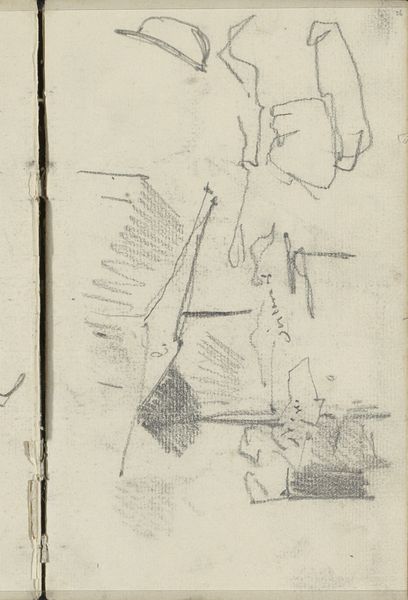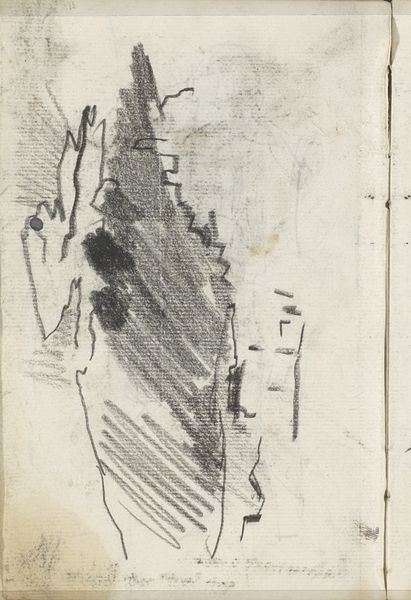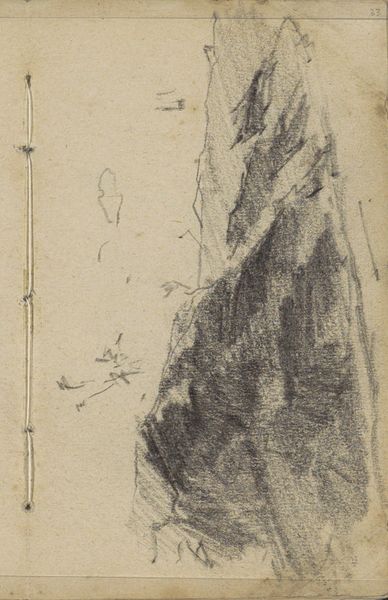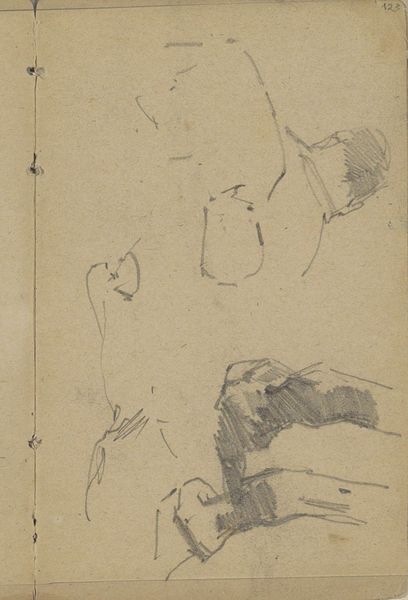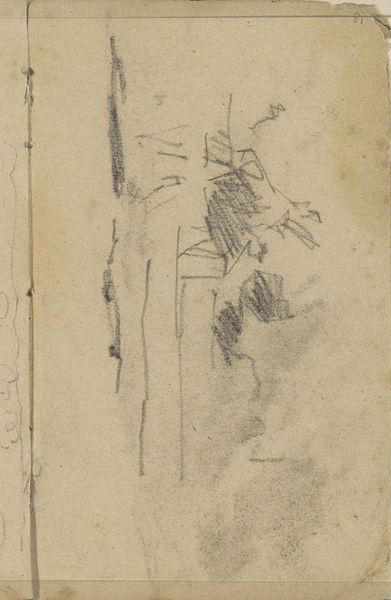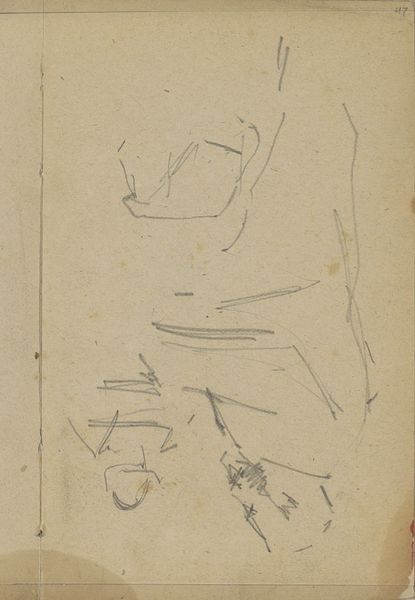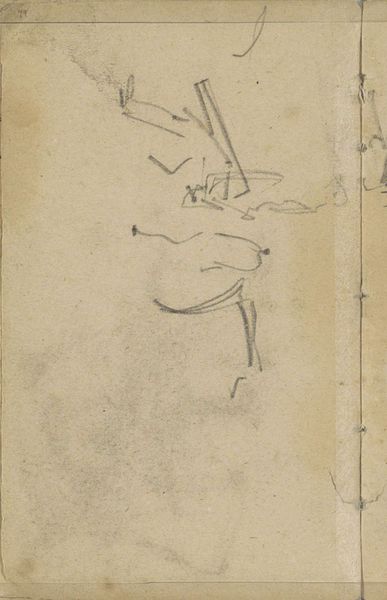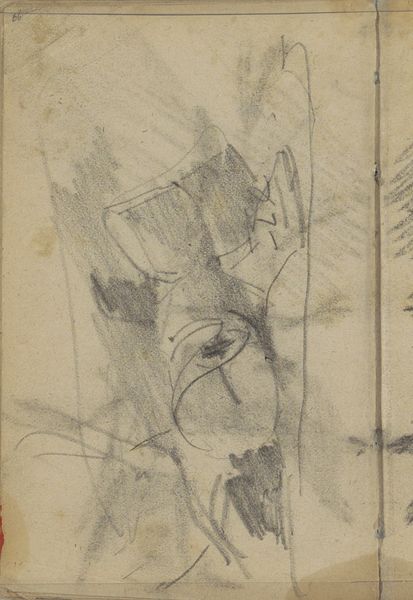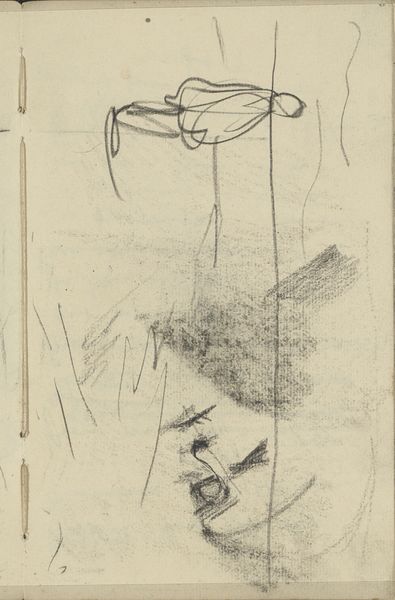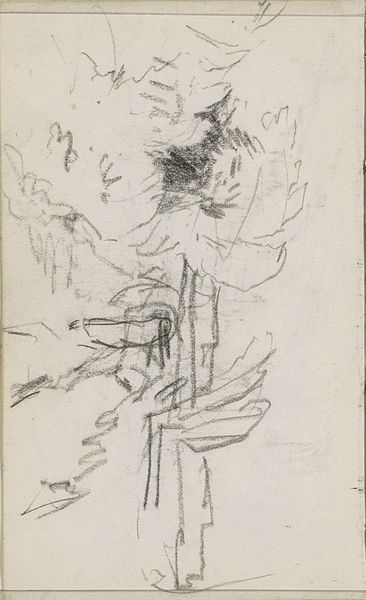
Copyright: Rijks Museum: Open Domain
Curator: Welcome. We're standing before George Hendrik Breitner's "Studie, mogelijk van een wolkenlucht," a pencil drawing created sometime between 1886 and 1903. It's currently held here at the Rijksmuseum. What are your initial thoughts? Editor: Well, my first impression is… ephemeral. The wisps of pencil against the aged paper give a sense of fleeting movement, like trying to grasp the impermanence of clouds themselves. There’s something almost melancholic about its unfinished quality. Curator: It is fascinating, particularly when considered within Breitner's broader body of work. Breitner, though associated with the Amsterdam Impressionism movement, often focused on the gritty realities of city life. It is a curious diversion, and tells a whole story about how art history sees a Dutch master today. Editor: Absolutely. And thinking about those urban scenes, it’s tempting to see this cloud study as an escape. Maybe a quiet rebellion against the industrial landscape, seeking solace in the natural world, even if just for a moment captured on paper. Breitner was known to engage with all classes, even the invisible working class. What did that perspective bring to his cityscapes and does that inform his landscapes? Curator: I'd argue that Breitner's involvement within various social structures did not detract from, but actually enhanced, the social-political position he enjoyed in Amsterdam. Certainly, he was considered an important talent within the Dutch art scene, earning him commissions and attention by some of the biggest influencers in society. However, as you mentioned before, here he seems to turn to the skies... What impact does this drawing have now as compared to when it was created? Editor: Today, seeing such a raw, personal sketch feels almost radical. In an age saturated with hyper-realistic imagery, there's something powerful in its vulnerability. The unrefined technique allows us, and perhaps also the painter, to grapple with his innermost concerns of representation in art. Does the painter create an "honest" scene, a "true" scene? It invites us to slow down, breathe, and appreciate the beauty in simplicity and imperfection, just as we can see the painter attempting the same through nature. Curator: Indeed, I wonder about this sketch as a means of protest of hyper-realism at that time. Looking at this intimate work, one can't help but feel a connection with the artist, a silent dialogue across the decades. Editor: Ultimately, this piece speaks to the human need for connection - with nature, with oneself, and with others across time. Its apparent simplicity belies a deep engagement with the complex realities of life.
Comments
No comments
Be the first to comment and join the conversation on the ultimate creative platform.
